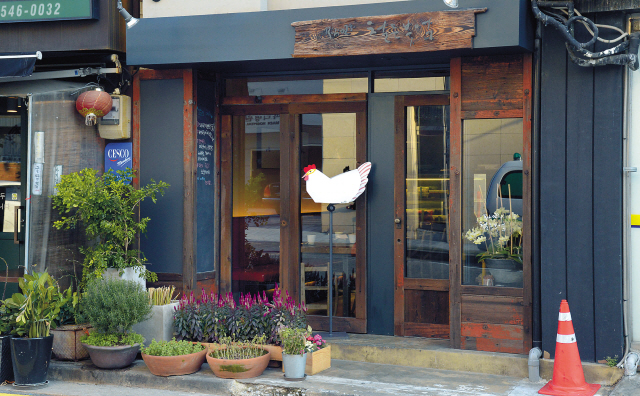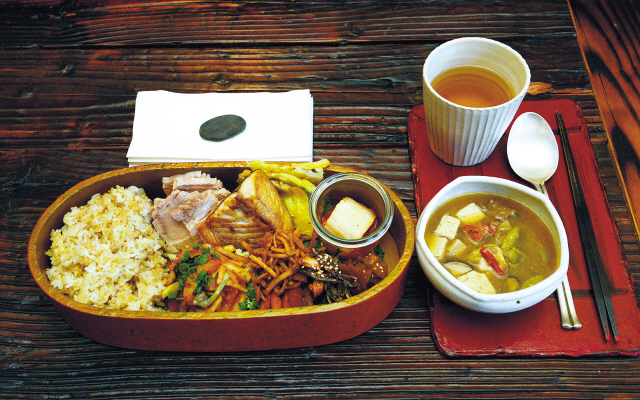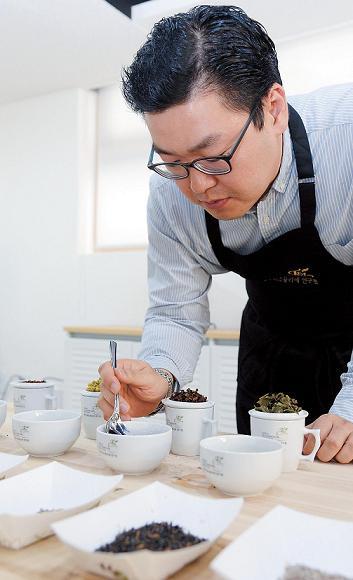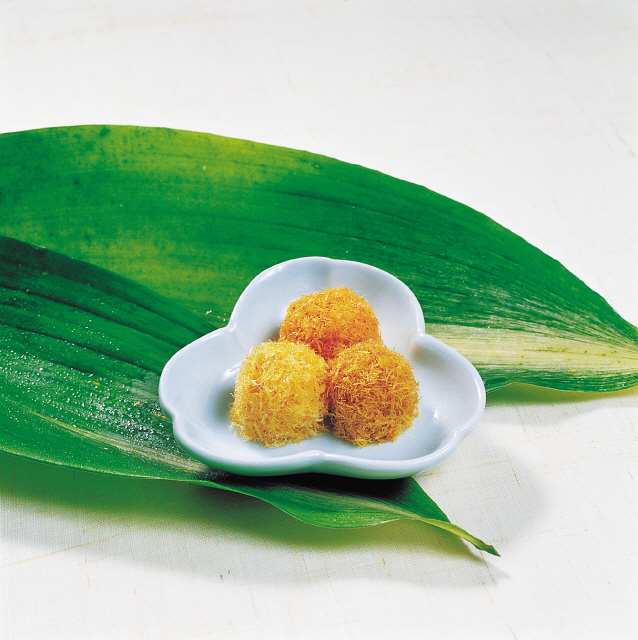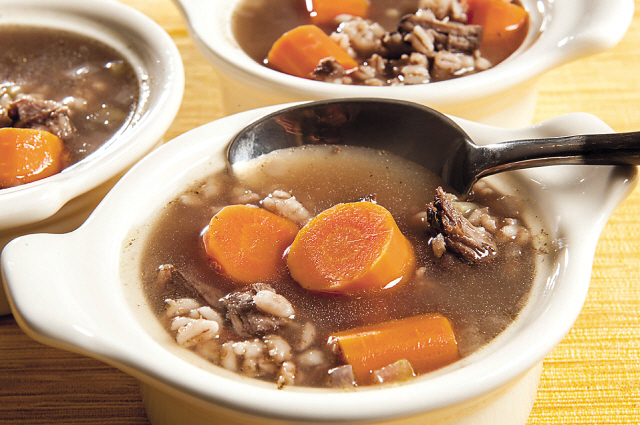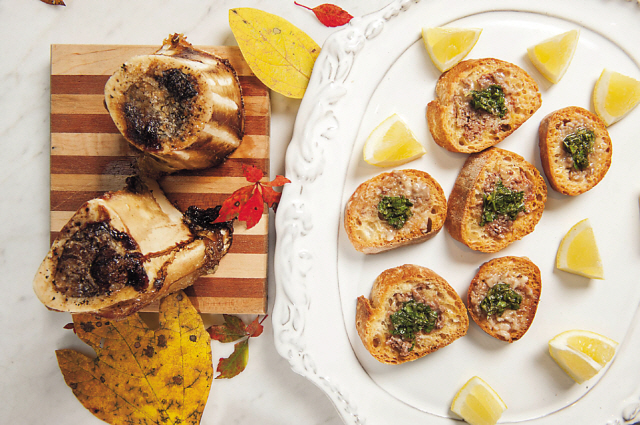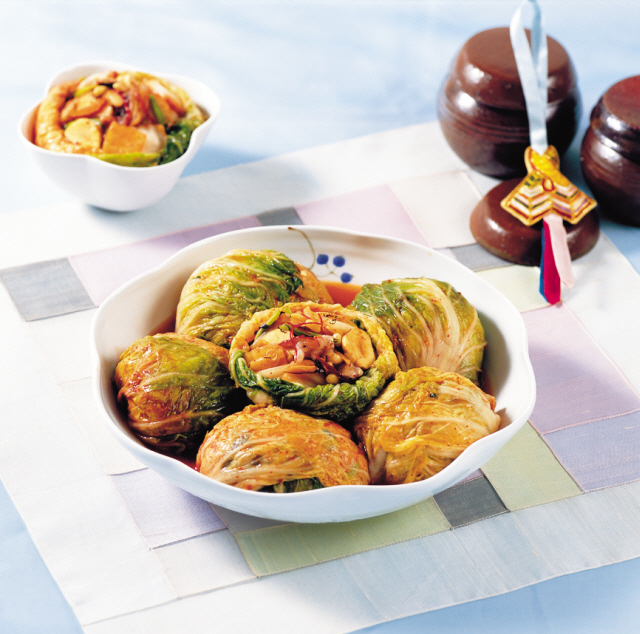Published : 2012-11-30 19:13
Updated : 2012-11-30 19:13
Updated : 2012-11-30 19:13
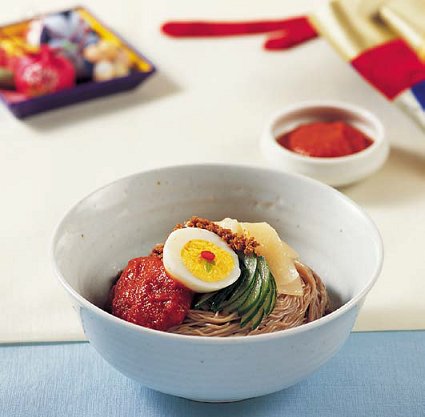 |
| Bibim-naengmyeon (Institute of Traditional Korean Food) |
Ingredients
● 600 g buckwheat noodles (dried), 15 cups water
● 100 g minced beef
Seasoning sauce 1:
● 1/2 tbsp soy sauce, 1/2 tsp sugar, 1/2 tsp minced green onion
● 1/4 tsp minced garlic, 1/8 tsp ground black pepper
● 1/2 tsp sesame salt, 1/2 tsp sesame oil
● 1 cucumber, 1 tbsp water, 1/2 tsp salt
● 100 g radish, 1/2 tsp salt, 1/2 tbsp sugar, 1/2 tbsp vinegar
● 1/5 pear, 1/2 cup pear dipping water, 1 tsp sugar
● 2 eggs, 5 cups water, 1 tsp salt
Seasoning sauce 2:
● 1/2 pear, 1/4 onion, 1 1/2 tbsp salt
● 1 tbsp minced garlic, 3 tbsp sugar, 6 tbsp vinegar
● 4 dried red peppers, 4 tbsp coarse red pepper powder
1. Clean the beef with cotton cloths and then season with seasoning sauce 1 (85 g).
2. Wash the cucumber, cut it into two pieces lengthwise and shred into 4 cm-long and 0.2 cm-thick pieces diagonally. Marinate them with salt water for 20 min. then wipe off the water with cotton cloths (47 g).
3. Wash the radish, shred into 6 cm-long, 1.5 cm-wide and 0.2 cm-thick pieces, then marinate with salt, sugar and vinegar for 20 min (85 g).
4. Peel the pear and cut in half (70 g). Dip in sugar water for 5 minutes.
5. Peel and shred the pear and onion for seasoning sauce 2.
6. Wipe dried red pepper with damp cotton cloths, cut them diagonally and remove the seeds.
7. Grind seasoning sauce 2 without red pepper powder in the mixer first, then add coarse red pepper powder and mix together.
8. Preheat a frying pan, stir-fry beef for 2 minutes on medium heat (66 g).
9. Put water, salt and eggs in a pot, heat it up for 5 minutes on high heat. When it boils, lower the heat to medium, boil it for 12 minutes and then place them in cold water. Peel off the eggshell and halve them.
10. Pour water into a pot, heat it up for 12 minutes on high heat. Boil noodles for 2 minutes and rinse in cold water by rubbing the batch with your hands. Make coils with noodles and drain water on a tray.
11. Place the noodles in a bowl, and top with prepared beef, cucumber, radish, pear, egg and seasoning sauce 2.
Tips
● Fresh wet noodles may be used.
● Pre-mixed noodles with seasoning sauce may be served.

